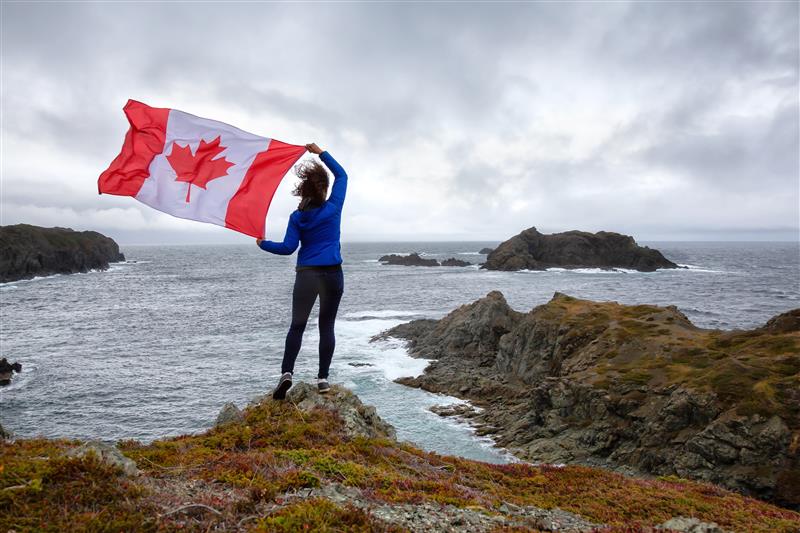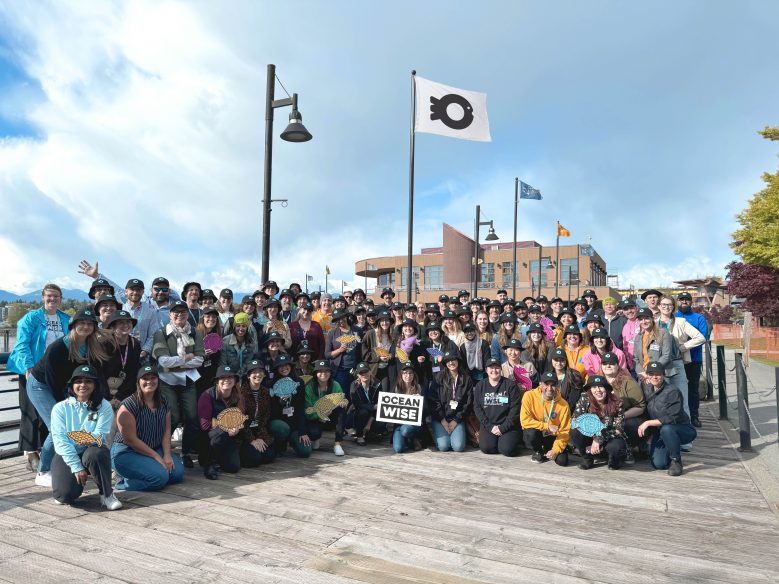
Where Rivers Meet the Ocean
The St. Lawrence Estuary near Tadoussac, Quebec is brimming with life: from whales, seals, birds and fish, to more mysterious deep-sea creatures. Here, waters from the rivers and the ocean meet, mixing to create a dynamic marine ecosystem. Thirteen whale species and more than 2000 plant and animal species call the estuary home. The area is so rich in biodiversity that the St. Lawrence Estuary and the Saguenay Fjord have been protected since 1998 under Parks Canada and Parks Quebec (SÉPAQ) as a marine park (area in light blue on the image below). Today, people all around the world visit Tadoussac and the Saguenay–St. Lawrence Marine Park to explore the abundant marine diversity that the region has to offer.
The Saguenay-St. Lawrence Marine Park protects an impressive area of 1,246 km2, from the shoreline all the way to the depths of the seafloor and everything in between. Notably, the park helps protect part of the habitat that is suitable for the endangered St. Lawrence Estuary beluga whales. The park’s mandate is centred on the conservation of the area for present and future generations, while promoting its use for education, recreation and scientific research.

So why is this area a biodiverse and ecologically exceptional region? The answer lies below the surface of the water. The meeting point, also known as the confluence, between the St. Lawrence Estuary and the Saguenay River is the point where the water from the Great Lakes, the Saguenay basin, and the Atlantic Ocean meet, creating ideal conditions for marine life to thrive.
Deep, cold and salty water from the Laurentian Channel mixes with warm freshwater from the rivers and creates an upwelling effect, a rising of nutrient-rich seawater from the depths. This phenomenon oxygenates the water and stimulates the growth of phytoplankton (small algae) at the surface. Phytoplankton play a critical role as the first link in the food chain, feeding other species like zooplankton, which then feed much larger species like fish and whales!

The many species involved in the food chain are a part of a complex, yet fragile, food system that supports thousands of local and migratory species. For this reason, it is so important to choose Ocean Wise recommended seafood from local, sustainable fisheries and aquaculture to ensure this unique ecosystem continues to thrive for generations to come!

However, marine life and people have had a connection for thousands of years. Humans have inhabited the shores of the St. Lawrence and Saguenay estuaries for more than 8,000 years. The region of Totouskak (in the Innu language), also known as Tadoussac, was historically a meeting place for many Indigenous people. It was a gathering place for hunters, fishers and traders that travelled along the St. Lawrence. This tradition continued with the arrival of the Europeans and the fur trade. Today, about 260,000 people live in the region, and a million people visit the area every year.
Currently, youth in the Ocean Bridge St. Lawrence Cohort are in the Tadoussac – Saguenay region of Quebec, learning about the rich biodiversity, culture and history of the area. Ocean Bridge connects Canadian youth and young professionals from coast to coast to coast, empowering them to make a difference towards ocean conservation. Follow @OceanWiseYouth on Instagram and check out their St. Laurent story highlight for some amazing pictures and videos of their learning journey.

This blog was written by Nadia Dalili, Ocean Wise Seafood Outreach Assistant, Quebec
[Photo 1] Credit: Fisheries and Oceans Canada
[Photo 2] Credit : Saguenay-St. Lawrence Marine Park
[Photo 3] Credit: Saguenay-St. Lawrence Marine Park
[Photo 4] Credit: Nadia Dalili
Posted August 26, 2020 by Ocean Wise








